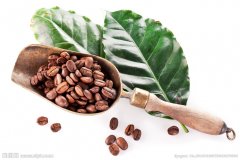What are the characteristics of defective coffee beans? factors that affect the flavor of high-quality coffee
Which are the defective beans that affect the flavor of high-quality coffee?
Moldy beans: cyan and white bacteria grow because they are not completely dry or are too wet during transportation and preservation, which will make the whole cup of coffee mildew if mixed into roasting and grinding.
Fermented beans: there are two main causes, one is the process of soaking in the washing fermentation tank, which is formed by water pollution, and the other is that the moisture in the warehouse makes it ferment and makes the surface of the beans mottled. It is not easy to distinguish from the appearance, but special attention should be paid to the rotten smell if mixed with the coffee.
Dead beans: beans with abnormal results. The color is not easy to change because of baking, so it is easy to distinguish.
Immature beans: pick them when they are not ripe and have a fishy smell. Lack of the luster of ripe beans, and it is not easy to distinguish them at beginners.
Shell beans: caused by poor dryness or abnormal mating, the beans break from the central line. It is easy to produce uneven baking.
Worm-eaten beans: when the coffee fruit ripens and turns red, the worm lays an egg inside. The coffee fruit is an important nutrition for the growth of larvae, leaving moth-eaten beans on the surface. It will cause the coffee liquid to be cloudy and produce a strange smell.
Black beans: early maturity, falling on the ground, long-term contact with the ground and fermentation blackening. It smells rotten and muddy.
Shell beans: the endocarp is covered on the inside of the pulp of coffee beans and remains on the washed coffee beans. It will cause astringency.
Cocoa: it is caused by natural drying that the pulp remains and is not fully shelled. It smells like dirt.
In addition to the above all kinds of defective beans, there are stones, glass, branches and other impurities, light cause the roaster can not be used normally, heavy is scrapped.
If you want to know how these defective beans affect the flavor of coffee, the best way is to drink a cup of coffee made of defective beans, you can deeply appreciate the importance of hand selection before baking.

Important Notice :
前街咖啡 FrontStreet Coffee has moved to new addredd:
FrontStreet Coffee Address: 315,Donghua East Road,GuangZhou
Tel:020 38364473
- Prev

Standard Coffee sales of High quality Coffee Ethiopian Solar Yega Chefe aricha Yega Snow Coffee
1. High-quality raw beans with flawless beans (raw beans with few defective beans such as fermented beans and moldy beans, but not high-priced beans) 2. Freshly roasted coffee (coffee is best served within two weeks after roasting, preserved as beans and ground before brewing) 3. Freshly ground coffee 4. The freshly brewed coffee is summarized as follows: the so-called good coffee quality coffee can be defined.
- Next

How to clean the coffee machine semi-automatic coffee machine cleaning routine cleaning coffee machine
There are mainly the following six methods: 1, the need for special reminder is that the coffee machine must be cleaned regularly, generally speaking, about a month. It can be adjusted according to the frequency used. When determining whether cleaning is needed, you can check the pressure of the steam, and clean it when the pressure of the steam is not ideal. two。 Try to choose a professional detergent for cleaning, so that the machine will not be cleaned
Related
- Beginners will see the "Coffee pull flower" guide!
- What is the difference between ice blog purified milk and ordinary milk coffee?
- Why is the Philippines the largest producer of crops in Liberia?
- For coffee extraction, should the fine powder be retained?
- How does extracted espresso fill pressed powder? How much strength does it take to press the powder?
- How to make jasmine cold extract coffee? Is the jasmine + latte good?
- Will this little toy really make the coffee taste better? How does Lily Drip affect coffee extraction?
- Will the action of slapping the filter cup also affect coffee extraction?
- What's the difference between powder-to-water ratio and powder-to-liquid ratio?
- What is the Ethiopian local species? What does it have to do with Heirloom native species?

